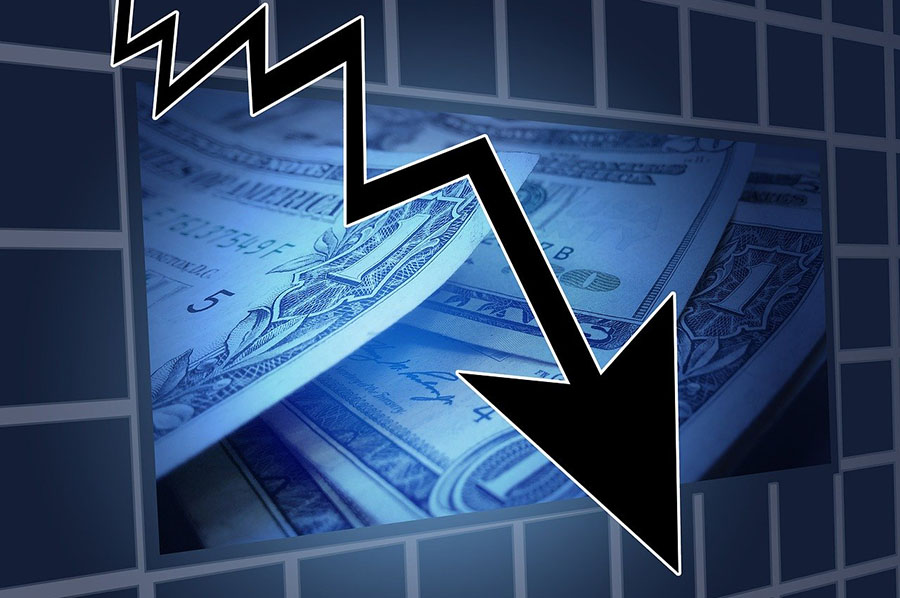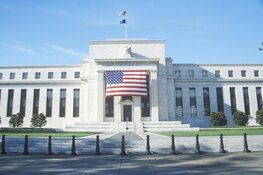For a brief shining moment in 2008 the United States had the opportunity to fix what ails the banking and financial system. The government failed to make the hard decisions that would have changed the course of the financial collapse the world finds itself in today. We have that same opportunity today and we need to get it right this time.
Banks have no morality. Their sole goal is to make money. By and large they really don't care how they make it. Often they consider fines from governments little more than the cost of doing business. But the origin of financial fraud and chicanery in the 21st Century and turning it into a national sport go back to when the William Jefferson Clinton mob ran Washington.
Of great importance but far too complicated in its implications to our current financial crisis to be fully discussed here in detail would be the repeal of the Glass-Steagall Act in 1999.
First passed in 1933 during the Great Depression, Glass-Steagall broke banking down into two parts. (1) Serving to take deposits then making loans and (2) acting as an investment fund risking the money of the bank in various activities. The repeal of Glass-Steagall turned banks from boring old businesses open from 10 AM until 4 PM into 24 hour a day casinos. So when your money deposited in your local bank are confiscated to bail out the bank you have the Clinton gang to thank.
But the direct and immediate cause of the 2007-2009 Global Financial Crisis, termed the GFC, goes back to a number of obscure acts and actions on the part of the Clinton organization.
The initial seeds of destruction came late in the Carter administration in 1977 when the original Community Reinvestment Act was passed to eliminate discrimination in the financing of housing within low-income neighborhoods.
The entire law was based around two different fallacies. One was that the Federal Government knew better about making loans than the bankers who would be putting their institutions at risk by making loans that had a high probability of not being paid. Bankers, after all, used to consider the amount of risk involved before making a loan.
The other fallacy has to do with a transition in how Americans think about housing that changed from the 1960s to the 1970s. In 1960 if you tried to convince someone that putting money into a house was an investment, that person would think you insane. Buying a house was no different than the purchase of a car. If you could afford it and needed it, you shopped around for the best deal you could make and you bought it. You owned a car because you needed transportation, not because it was an investment. A car or a house is an expense, not an investment. You buy what you can afford; you pay for insurance and the expense of maintenance. Cars aren't investments. Neither is housing.
With inflation running out of control and running as high as 4.6% by August 15th of 1971 when Nixon closed the gold window, if you bought a house today and it went up 3% over the next year, you thought you were making money. Your house through some magical and invisible event was worth more money. Actually not. The dollar was worth 4.6% less a year later. If your house went up 3%, you were losing money on it just as homeowners always have.
But the seed was sown that owning a home was better than renting. When that particular plant grew to full size it cost millions of Americans both their homes and their fortunes. The Clinton gang greased the skids as bankers discovered a new interesting and profitable scam.
The bankers of yesteryear were smart and experienced enough to have some basic idea of who would and who wouldn't pay back loans. The government stepped in and insisted they knew better and besides, it was for a good cause. If minorities believed that Uncle Sammy was handing them something for free, perhaps they would vote that party line. It was a bribe of sort from Democratic administrations to minorities. And it seemed to work at first.
When applicants for mortgages began to flood in as interest rates declined bankers got more nervous. The Clinton gang forced through over 100 Executive Orders demanding banks make more risky loans to minorities. At first the bankers pushed back, knowing many or most of the loans would be a problem. Clinton rigged the game by revoking the terms of Glass-Steagall and the casinos opened. Now the banks could bet the money rightfully belonging to depositors at the Craps Table.
All the gains would be privatized and go to the bank. In the unlikely event that the bets turned sour, the banks could whine to the Federal Government that what they did caused the problems in the first place so any losses should be covered by the government. Which meant in reality that the banks took the profits and the taxpayers were on the hook for all of the losses. What a great scam.
At first the banks couldn't cope with the demand so they convinced Congress and the Clinton gang to have Freddie Mac and Fannie Mae pick up the excess. The newly freed banks and mortgage financing companies realized that rather than profit based on collecting interest on the risky loans, they could make money just by initiating and packaging the mortgages to send them down the line like handing off a hot potato.
As scams go, the whole subprime mortgage scam was a great scam. Everyone involved from the home buyers who believed you could get something for nothing to the real estate agents who would sell a $200,000 condo to a dead cat if they could get a paw print knew it was a fraud.
The property surveyors who put absurd values on housing units; the mortgage companies who faked loan applications. Fannie Mae and Freddie Mac who packaged subprime excrement together with loans that might get paid someday; the ratings agencies who held their noses as they gave AAA ratings to packages of loans that would never get paid; they were all part of it and they didn't care. As long as they made money, why should they care?
The edifice began to crack in 2006-2007 of its own weight. As a scam, it was viable only as long as real estate prices went up. When the market began to soften in 2006-2007 the walls started to tumble down with the collapse of two Bear Stearns Hedge Funds in June of 2007. The crisis grew ever larger and eventually resulted in the demise of Bear Stearns in March of 2008 leading to a collapse of the US stock market and near collapse of the international financial system.
When fraud became an integral part of how business is done in the US. How derivatives are going to turn what could have been a recession into a full blown depression with tens of millions of Americans being destroyed financially.
To be continued in part IV.
Common Sense 2.0 Part I available here.
Common Sense 2.0 Part II available here.
Common Sense 2.0 Part IV available here.
Disclosure:
1) Statements and opinions expressed are those of the author and not of Streetwise Reports or its officers. The author is wholly responsible for the validity of the statements. Streetwise Reports was not involved in any aspect of the article preparation. The author was not paid by Streetwise Reports LLC for this article. Streetwise Reports was not paid by the author to publish or syndicate this article.
2) This article does not constitute investment advice. Each reader is encouraged to consult with his or her individual financial professional and any action a reader takes as a result of information presented here is his or her own responsibility. By opening this page, each reader accepts and agrees to Streetwise Reports' terms of use and full legal disclaimer. This article is not a solicitation for investment. Streetwise Reports does not render general or specific investment advice and the information on Streetwise Reports should not be considered a recommendation to buy or sell any security. Streetwise Reports does not endorse or recommend the business, products, services or securities of any company mentioned on Streetwise Reports.
Do you invest in the stock market, or have you always wanted to learn more about investing? Streetwise Reports is dedicated to sharing interesting and not always so well known investment ideas. We get our stories from the industry experts, and we want to share them with you. If you're interested in learning more, check out www.streetwisereports.com!














